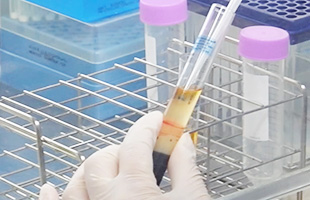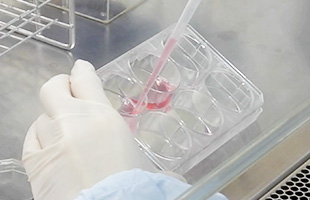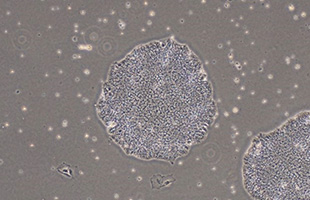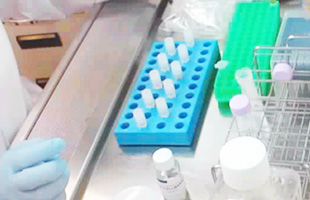
Research Activities
Research Activities
Home › Research Activities › Protocols
Protocols
Protocols on iPS cells
CiRA was established at Kyoto University - the birth place of iPS cell technology. As the world's first institution focusing on iPS cell research, CiRA will help the research community by providing information on iPS cell protocols.
Mouse iPS Cells
-
Generation Method of Fbx15- and Nonog-iPS Cells
Please refer to the following paper:
-
Induction of pluripotent stem cells from fibroblast cultures
Nature Protocols 2 3081 - 3089
(01 Nov., 2007)
-
Induction of pluripotent stem cells from fibroblast cultures
-
Improved Generation Method of iPS Cells
- Without antibiotic selection
- With 3 factors excluding c-Myc-
See the protocol (Ver.2)
| Updated: July. 17, 2008
-
See the protocol (Ver.2)
-
Generation Method of Mouse iPS Cells with Plasmid Vectors
Please refer to the following paper:
-
Generation of mouse-induced pluripotent stem cells with plasmid vectors
Nature Protocols(VOL.4 NO.12 2009)Nature Protocols(VOL.4 NO.12 2009)
-
Generation of mouse-induced pluripotent stem cells with plasmid vectors
Human iPS Cells
-
Reprogramming Human Dermal Fibroblasts (HDFs) Using Synthetic RNA
- See the protocol | Updated: September 8, 2025
-
Reprogramming Human Peripheral Blood-Derived Mononuclear Cells (PBMCs)
Using Synthetic RNA- See the protocol | Updated: September 8, 2025
-
Generation and culture of Human iPS Cells under feeder-free condition
- See the protocol | Updated: March 11, 2014
-
Generation of Human iPS cell induction from human T lymphocytes
- See the protocol | Updated: January 10, 2013
-
Generation of Human iPS cell induction from human non-T,
B cells from peripheral blood- See the protocol | Updated: January 10, 2013
-
Generation of Human iPS Cells
- See the protocol | Updated: March 5, 2009
-
Generation and Characterization of Human iPS Cells
Please refer to the following paper:
-
Generation and Characterization of Human Induced Pluripotent
Stem CellsMari Ohnuki, Kazutoshi Takahashi and Shinya Yamanaka Current Protocols in
Stem Cell Biology June, 2009Mari Ohnuki, Kazutoshi Takahashi and Shinya Yamanaka Current Protocols in Stem Cell Biology June, 2009
-
Generation and Characterization of Human Induced Pluripotent
Video Protocols
Please refer to the following PDF:


























